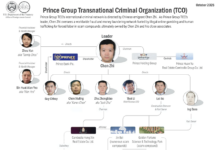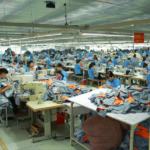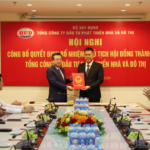A New Technological Playing Field for Vietnamese Enterprises
On November 19, the Giao Thong newspaper organized a seminar on “High-Speed Rail: Opportunities and Challenges for Vietnamese Enterprises.”
Mr. Vu Hong Phuong, Director of the Railway Project Management Unit under the Ministry of Transport, shared that the high-speed rail project is an exceptionally large endeavor that has been meticulously studied for over 18 years. It is unprecedented in Vietnam and ranks among the longest such projects globally.
The consulting unit’s research revealed that the construction investment component accounts for approximately $33 billion of the total $67 billion investment, in addition to systems for control, power supply, and vehicles, among others.
“We must take control of our capital to avoid dependence on foreign countries. Hence, this presents a tremendous opportunity for domestic enterprises,” asserted Mr. Phuong.

Mr. Vu Hong Phuong, Director of the Railway Project Management Unit, emphasized the significant opportunities for Vietnamese businesses in the high-speed rail project.
Mr. Nguyen Quoc Hiep, Chairman of the Vietnam Contractors Association, opined that with a substantial construction volume of over $33 billion, this project signifies a revolution and a transformative opportunity for domestic construction contractors.
Vietnamese contractors have already demonstrated remarkable progress in constructing bridges and suspension tunnels for the country’s road network.
However, the 350 km/h high-speed rail project demands a higher level of precision and technology due to its speed-related requirements. Therefore, Vietnamese contractors must approach this as a new technological challenge, eager to learn and adopt the most advanced construction knowledge and techniques.
Collaborating for Success
Mr. Dao Ngoc Vinh, General Director of TEDI, the project’s consulting unit, pointed out the complexity of the high-speed rail system, which differs from road systems in its higher complexity and systemic nature, encompassing multiple components such as infrastructure, signaling, equipment, and power supply.
In terms of construction, both high-speed rail and expressways share similar infrastructure elements, including roadbeds, bridges, and tunnels. However, the most significant distinction lies in speed. The North-South high-speed rail project is designed for a train speed of 350 km/h, compared to 120 km/h for expressways. This speed differential significantly influences the technical requirements of the infrastructure.

Mr. Dao Ngoc Vinh, General Director of TEDI.
“The project demands absolute precision in construction and a heightened awareness of quality control. Negligence in this regard can lead to significant issues, as evidenced by an accident in Germany caused by inadequate control of the train axle’s turning angle,” Mr. Vinh cautioned.
Mr. Nguyen Duc Kien, former Head of the Prime Minister’s Economic Advisory Group, acknowledged the challenges posed by the high-speed rail project. However, drawing on Vietnam’s experience in overcoming previously unfamiliar tasks, he expressed confidence in the capabilities of Vietnamese enterprises if given the opportunity.
Mr. Kien highlighted two critical areas for Vietnamese businesses to consider: human resources and collaboration. He noted a current labor shortage in expressway construction projects and expressed concern about the weak collaborative spirit among Vietnamese enterprises for mutual development.
“The opportunity is massive, but if businesses don’t proactively collaborate and invest in technology, they will likely miss out when the contract is awarded. If Vietnamese enterprises fail to unite and invest in technology, we will lose out on our home turf,” Mr. Kien warned.
Echoing this sentiment, Mr. Mai Thanh Phuong, Chairman of the Board of Directors of Railway Engineering Corporation, emphasized the need for Vietnamese enterprises to take the lead in consortia. However, he acknowledged that certain aspects require specialized personnel. It takes 4-5 years to train a university engineer, plus an additional 3 years of field practice, amounting to 7-8 years to produce a fully qualified engineer.

Mr. Mai Thanh Phuong, Chairman of the Board of Directors of Railway Engineering Corporation.
Mr. Phuong suggested that, given the immediate need, one solution could be to import labor and engineers while simultaneously investing in long-term human resource development over the next five years. He also proposed that businesses should form research groups and divide tasks according to their strengths.
“We need to focus on our approach rather than merely showcasing our construction capabilities. Regardless of our expertise or financial resources, when Vietnamese enterprises approach a $33 billion project, our counterpart funding will still be relatively small,” Mr. Phuong remarked.
He emphasized the importance of Vietnamese contractors leveraging their strengths to prepare, take shortcuts, and ensure unity and consistency among participating contractors. “Without more thorough preparation, it will be challenging to commence the project in the next two years,” he added.
The Evolution of Trade Figures Between Vietnam and Russia
Vietnam’s trade with the Russian Federation has reached 3.52 billion USD in the first three quarters of this year, a significant 41% increase compared to the same period last year. This has sparked a growing interest from Vietnamese enterprises, with many delegations traveling to Russia to explore market opportunities.
A Fresh Start for the Ministry of Construction’s Enterprise: Welcoming a New Chairman
On November 15, the Ministry of Construction announced the appointment of Mr. Dau Minh Thanh, Chief of Staff of the Ministry of Construction, as the new Chairman of the Members’ Council of the Housing and Urban Development Corporation (HUD).












































